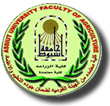horticultural plants, particularly fruits. Therefore, there is need for Se biofortification in fruits to meet the human
demand for Se. The objective of this study was to determine the optimal Se application rate, application stage and
method, and to assess their impacts on improving both the quality and nutrient profile of a sweet orange cultivar
’Hongjiangcheng’ (Citrus sinensis (L.) Osbeck). ’Hongjiangcheng’ is a notable variety of mandarin orange,
acclaimed for its large size, thin and smooth skin, orange-red flesh, tender and juicy texture, balanced sweetness
and acidityand distinctive flavor. A field experiment was conducted at the Qiaotou Town Test Base in Chengmai
County, Hainan Province, China. Biofortification of Se was done through foliar and soil application methods.
Treatments were: Control (C) with no application of Se, foliar application of 25 (SeF1), 50 (SeF2), 100 (SeF3) and
200 (SeF4) mg/L and soil application of 100 mg/L (SeS1) as well as a combination of 100 mg/L Se in soil along
with 50 mg/L Se on leaves (SeS1F2). At start of the experiment, 189 healthy, four-year-old citrus trees of similar
size and normal growth were selected. The trees were divided into three groups of 63 each. Each group received
the aforementioned treatments at the young fruit, expanding fruit and premature fruit stages. The Se was applied
once during each stage before 9:00 am on sunny days. Treatments were arranged in a randomized complete block
design with 9 biological replicates (7 treatments × 9 replicates = 63 citrus trees/ application stage). Foliar
application of Se at rate of 200 mg/L (SeF4) enhanced total Se content in leaves by 105, 34 and 69 % at young
fruit, expanding fruit and premature fruit stages compared to control (p≤0.05). Respective increments in fruits
were 264, 22 and 21 %. The total Se content in leaves were 32 and 40 % higher in the SeF4 (foliar) compared to
SeS1 and SeS1F2 (soil) treatments across all development stages (p≤0.05), respectively. The respective increments
in fruits total Se content were 16 and 52 %. Only at the young fruit stage, the organic Se content in
fruits was significantly higher in the SeF4 compared to soil application treatments (p≤0.05). Single fruit weight
was enhanced by 16.61, 13.69 and 4.36 g by foliar than soil application at young fruit, expanding fruit and
premature fruit stages, respectively. It was significantly higher (155.53 vs. 113.13 g) after application of SeF4
treatment at young fruit stage relative to all other treatments (p≤0.05). The application of SeF4 at the young fruit
stage resulted in an increased seed rate (97 %), total soluble solids (28 %) and solid-to-acid ratio (75 %), while
titratable acid decreased by 26 % compared to the control. Interestingly, Se application had non-significant effects
on the fruit shape index, peel rate and residue rate across all stages (p>0.05). Additionally, a positive
correlation was observed between fruit Se content and several quality indices like total soluble solids, solid acid
ratio, fruit shape index and fruit weight at young fruit stage (p≤0.05). It is concluded that foliar application of Se
at 200 mg/L (SeF4) during young fruit stage improved citrus Se content, its fruit weight and quality indices
establishing these fruits as a valuable source of Se-rich food for human consumption.
Research Abstract
Research Date
Research Department
Research File
Research Journal
Journal of Food Composition and Analysis
Research Member
Research Publisher
Elsiver
Research Rank
Q1
Research Vol
136
Research Website
https://www.sciencedirect.com/science/article/pii/S0889157524008561
Research Year
2024
 Do you have any questions?
Do you have any questions? 
